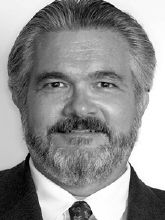Like many orthodontists of my generation, I spent a few years right out of dental school in the practice of general dentistry. Filled with youthful bravado and self-presumed omniscience with respect to dental practice, I set up shop in a moderate-size town in a relatively remote portion of my home state. It wasn't long before the practice was thriving. Like attracts like; given my age at the time, the practice rapidly filled up with young families. I could handle all the kids who needed regular caries control and restorative dentistry, but as you can imagine, many of them also needed orthodontics.
My ample load of general-dental patients provided a comfortable income and, therefore, absolutely no financial incentive for me to try doing orthodontic treatment without proper postgraduate training. I referred all my patients who needed orthodontics to the one orthodontist who lived and practiced in the same town. Soon, I began seeing many of my young patients in the braces he had applied. As the months went by, I began to notice that practically all of them were being treated in exactly the same fashion. At the time, I didn't know that much about orthodontics, but I certainly knew enough to see the common characteristics of their treatment. Almost all of them had their first bicuspids extracted. Almost all of them were in full archwires from 7 to 7. Almost all of them were in elastic chains, and almost all of them were in intermaxillary elastics.
Similar articles from the archive:
- THE EDITOR'S CORNER The Orthodontist as Sculptor August 2015
- THE EDITOR'S CORNER The Essence of an Expert September 2014
- THE EDITOR'S CORNER An Individualized Approach to Treatment Planning August 2010
The orthodontist in question was an astute businessman who courted his referral sources religiously. Part of this courtship involved taking his referring GPs out to lunch every couple of months. As he got used to my youthful exuberance and curiosity, I'm sure he came to expect a myriad of questions about how he was treating the many cases I had sent him. Finally, at one of our lunches, I asked him about his seemingly routine, uniform approach to treatment. He sort of chuckled, and, with a rather apologetic smile, he said, "Well, you know, after a while, they all begin to look the same. I treat all of them the same with a few modifications here and there, and I always get a predictable outcome." That seemed a little odd to me, so when I got back to my practice, I asked my main chairside assistant about this. She was a hometown girl in her mid-30s who had been raised not more than a couple of blocks from my practice. She knew most of the people in town, and she herself had been treated by the orthodontist in question. When I repeated to her that he treated almost everybody in the same way, she laughed and said, "Oh, yeah! Everybody knows a Jones face when you see it. They all look the same!" (The name has been changed for obvious reasons.) After that, I paid special attention to the faces I saw in that town, and darned if she wasn't right. You could truly spot a Jones face right off the bat: flat facial appearance; excessively upright incisors; restricted oral aperture; fixed, flat smile line. His unvaried approach to treatment planning had resulted in a uniform-looking group of post-treatment outcomes. Before long, it began to strike me as creepy - almost like something out of the Twilight Zone.
Fortunately, there was another orthodontist with a satellite practice in town whose approach to treatment was much more flexible and whose results were much more esthetically pleasing - and a lot less creepy. His far more individualized approach to treatment planning and delivery resulted in prettier and more functional smiles and occlusions. His outcomes distinguished him as a facial artist, while relegating the other orthodontist to the level of technician. Needless to say, I soon changed my referral habits.
The invention of preprogrammed appliance systems with uniform tip, torque, and in-out prescriptions built into the brackets themselves was undoubtedly one of the most important developments in the history of orthodontics. The availability of full-arch rectangular archwires made of various materials, with differing stiffnesses and other physical properties, has tremendously simplified the orthodontist's life and made highly successful treatment outcomes much more predictable. I have used them throughout my career and am delighted with what they can do. Even so, there is always the temptation to let the appliance do all the detailing work. To avoid producing the Twilight Zone uniformity I saw in my patients 30 years ago, the orthodontist still needs to customize his or her approach to the application of these systems. Preprogrammed appliances can get us about 90% of the way to a finished result, which, if left at that point, would still be a functional occlusion with an acceptable smile. But a truly beautiful smile requires substantial customization and treatment mechanics that go far beyond merely straightening teeth. Features such as black triangles, vertical relationships between the smile line and lip line, breadth of the arches, and especially the smile arc all need to be taken into consideration. These seemingly minor details make the difference between a beautiful, artistic smile and a technically acceptable smile.
In the current issue of JCO, Drs. Andre Machado and Adriana Moura present a case illustrating a highly customized approach to treatment. Both Charles Burstone and Robert Ricketts demonstrated years ago that segmented archwires can provide a much higher degree of individualization than continuous archwires, particularly in regard to the vertical positioning of the smile line and the overall appearance of the smile arc. While the same customized, artistic treatment outcomes may be achievable with most of today's appliance systems, the segmented approach offers unique and invaluable possibilities to those doctors who take time to master the technique.
RGK


